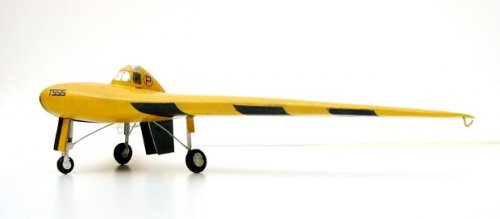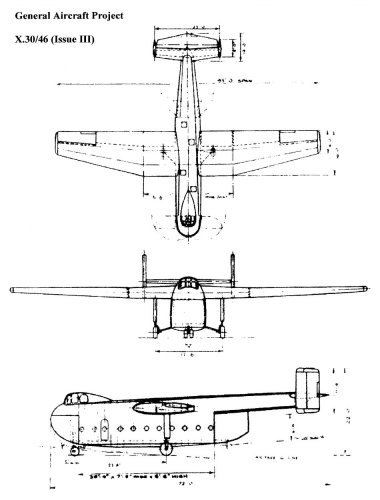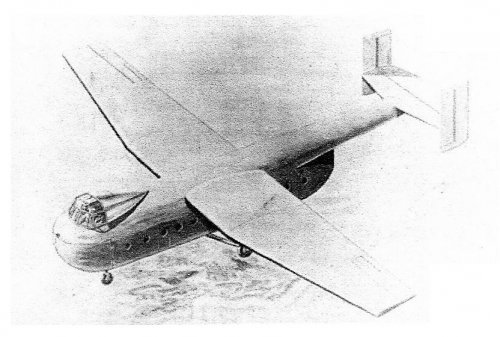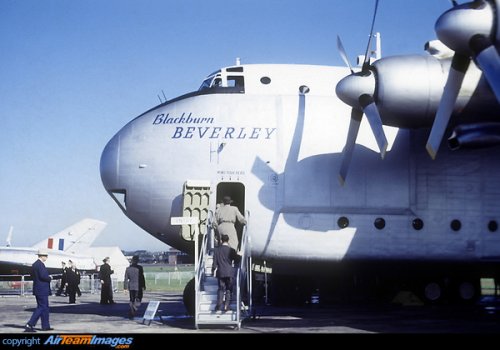- Joined
- 25 June 2009
- Messages
- 14,664
- Reaction score
- 5,833
C-W "Swan"
Type: twin-engine transport
Powerplants: two de Havilland Gipsy Six inline engines (see below)
Dates: 1936 (early C-W design), 1937 (redesign), 1938 (General Aircraft takeover)
The C-W Swan was an advanced design for a small size passenger transport. Initially envisaged as a light transport with boom-like rear fuselage to be powered by two Villiers-Hay engines, the Swan was completely redesigned. With its sturdy appearance, its twin tail and streamlined fuselage, the new Swan echoed American types such as Lockheed's Electra Jr. and Hudson transports. Power was to be provided by a choice of two de Havilland Gipsy Six variants, with the American Wright Whirlwind and Pratt & Whitney Wasp Junior considered for the more powerful versions. In fact, the latter was to equip the planned prototype (already registered as G-AERO, no less!), but all work on the Swan was halted when the company was closed in 1938.
When General Aircraft took over the assets of the bankrupt C-W Aircraft, the Swan design was also part of the package. However, there is no evidence that the company ever considered to produce the type. Actually, the fact that it did not receive a "GAL." number seems to indicate that the project was shelved for good and that only the Cygnet was seen as potentially marketable for the company — which is kind of a shame considering the fact that the whole Monospar family was nearing the end of its production and General Aircraft would have benefitted from a modern small transport to replace it.
Number built: none [registration G-AERO reserved]
Figures below are given for (1) the de Havilland Gipsy Six I, (2) the de Havilland Gipsy Six II, and (3) the Wright Whirlwind or P&W Wasp Jr.
Specifications
Span: 46 ft
Length: 36 ft
Height: 10 ft
Empty weight: 3460 lb (1), 3660 lb (2), 4460 lb (3)
Loaded weight: 5800 lb (1), 6000 lb (2), 7000 lb (3)
Performance
Maximum speed: 190 mph (1), 205 mph (2), 250 mph (3)
Cruising speed: 165 mph (1), 175 mph (2), 225 mph (3)
Cruising range: 660 miles, 700 miles (2,3)
Rate of climb: 900 ft/min (1), 1000 ft/min (2), 1500 ft/min (3)
Type: twin-engine transport
Powerplants: two de Havilland Gipsy Six inline engines (see below)
Dates: 1936 (early C-W design), 1937 (redesign), 1938 (General Aircraft takeover)
The C-W Swan was an advanced design for a small size passenger transport. Initially envisaged as a light transport with boom-like rear fuselage to be powered by two Villiers-Hay engines, the Swan was completely redesigned. With its sturdy appearance, its twin tail and streamlined fuselage, the new Swan echoed American types such as Lockheed's Electra Jr. and Hudson transports. Power was to be provided by a choice of two de Havilland Gipsy Six variants, with the American Wright Whirlwind and Pratt & Whitney Wasp Junior considered for the more powerful versions. In fact, the latter was to equip the planned prototype (already registered as G-AERO, no less!), but all work on the Swan was halted when the company was closed in 1938.
When General Aircraft took over the assets of the bankrupt C-W Aircraft, the Swan design was also part of the package. However, there is no evidence that the company ever considered to produce the type. Actually, the fact that it did not receive a "GAL." number seems to indicate that the project was shelved for good and that only the Cygnet was seen as potentially marketable for the company — which is kind of a shame considering the fact that the whole Monospar family was nearing the end of its production and General Aircraft would have benefitted from a modern small transport to replace it.
Number built: none [registration G-AERO reserved]
Figures below are given for (1) the de Havilland Gipsy Six I, (2) the de Havilland Gipsy Six II, and (3) the Wright Whirlwind or P&W Wasp Jr.
Specifications
Span: 46 ft
Length: 36 ft
Height: 10 ft
Empty weight: 3460 lb (1), 3660 lb (2), 4460 lb (3)
Loaded weight: 5800 lb (1), 6000 lb (2), 7000 lb (3)
Performance
Maximum speed: 190 mph (1), 205 mph (2), 250 mph (3)
Cruising speed: 165 mph (1), 175 mph (2), 225 mph (3)
Cruising range: 660 miles, 700 miles (2,3)
Rate of climb: 900 ft/min (1), 1000 ft/min (2), 1500 ft/min (3)








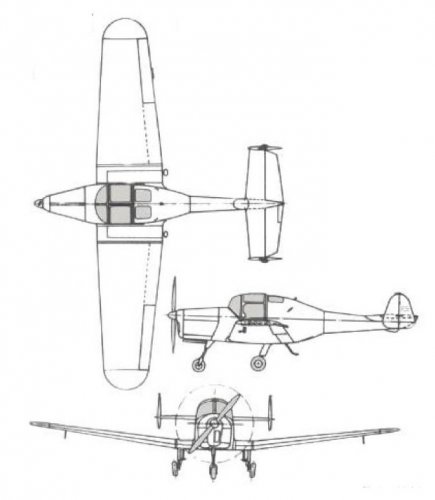

















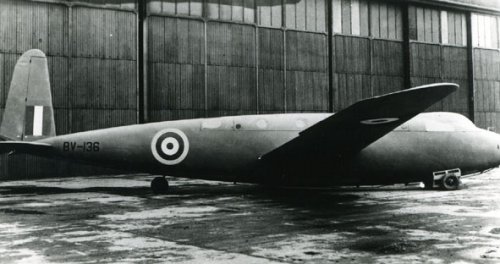






























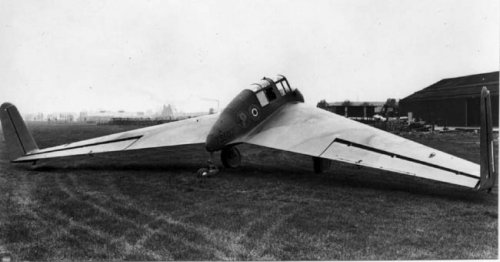













![GAL.60 [WF320].jpg](/data/attachments/91/91754-b359535b155d2705d63a36bbb75e019c.jpg)






